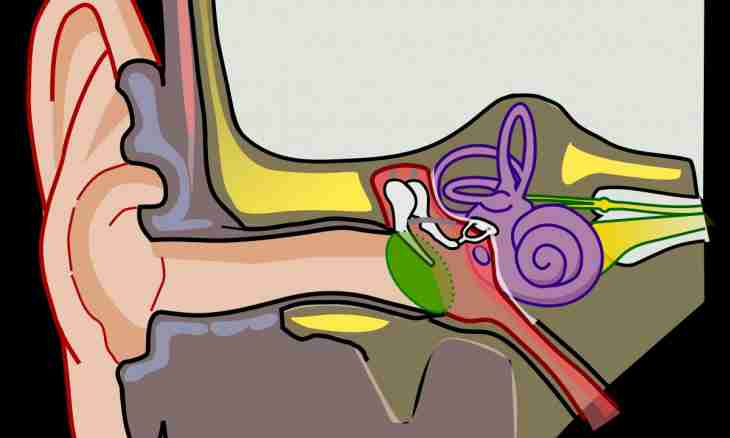Parents of deaf and hearing-impaired children, as well as the tutors working with such children know a strange thing. The hearing-impaired child can hang long headfirst on a horizontal bar or have a good time, quickly turning the head here and there. Similar actions which would cause a painful attack of dizziness in the healthy person give pleasure to the children suffering from neurotouch relative deafness or deafness. Communication between hearing disorder and disorder of sense of equilibrium is explained by the fact that the organ of equilibrium is located in an inner ear.
The inner ear is a complex system of cavities and channels in a temporal bone. All these cavities and channels are tied among themselves and form a labyrinth. It is subdivided into a bone labyrinth and webby, located in it. Walls of labyrinths are divided by perelimfotichesky space. All these departments are filled with different physiological liquids: a bone labyrinth and perilimfatichesky space – perilimfy, a webby labyrinth – an endolymph.
Both labyrinths are subdivided into three parts: threshold (bone and webby), snail and polukruzhny channels. The snail is responsible for hearing, and a threshold and polukruzhny channels are an organ of equilibrium – a vestibular mechanism.
Polukruzhny canals of an inner ear are in three directions perpendicular each other. Such arrangement corresponds to three spatial dimensions – length, width and height.
At any position of a body in general and the heads in particular in space the gravity on an inner ear changes. Because of it pressure of liquid is displaced either on lower, or on sidewalls of channels. At rotary motions, liquid in one channel lags behind in the movement, in another moves by inertia. All these changes in pressure and the movement of liquid in anticipation of and channels excite hair cells – receptors of an inner ear, from them excitement is transferred on nervous fibers to a brain. The nervous center receiving signals from a vestibular mechanism is in a medulla. In the same place the centers regulating some physiological processes are located: breath, digestion, blood circulation. Too strong excitement of the center corresponding to a vestibular mechanism is capable to extend also to these centers. Then the person feels nausea, dizziness, sinking heart and other unpleasant feelings which collectively call "motion sickness". It happens if the vestibular mechanism has to work in unusual conditions for the person – in zero gravity or at big difference of height (for example, on the plane), but the person leading an inactive life can suffer from travel sickness even in the car. The similar mechanism of action also the snail possesses: her hair cells are excited by movement of the liquid filling a labyrinth too. The difference consists only in the reason of the movement of liquid: in a snail it is set in motion by the fluctuations of an eardrum transferred by the system of acoustical stones. If the signal transmission mechanism from hair cells on nervous fibers as it happens at neurotouch relative deafness is broken, both feelings – both hearing, and sense of equilibrium suffer.

